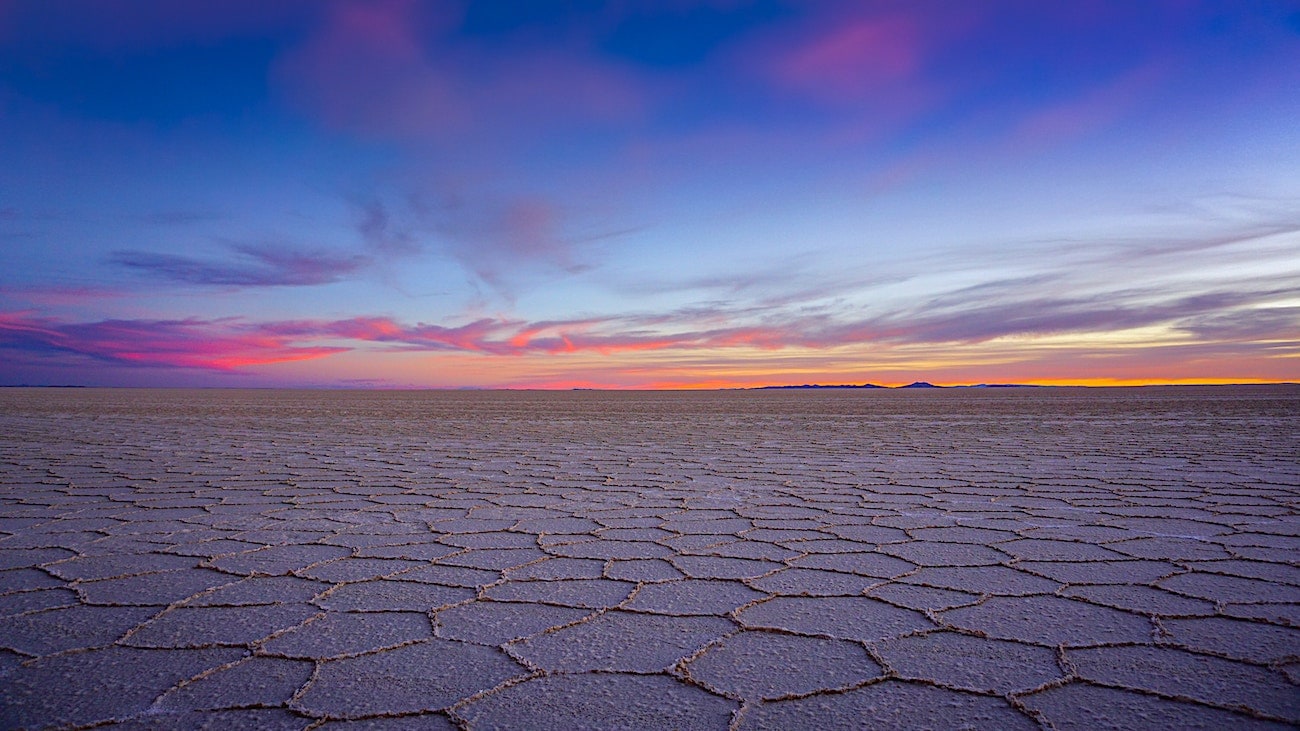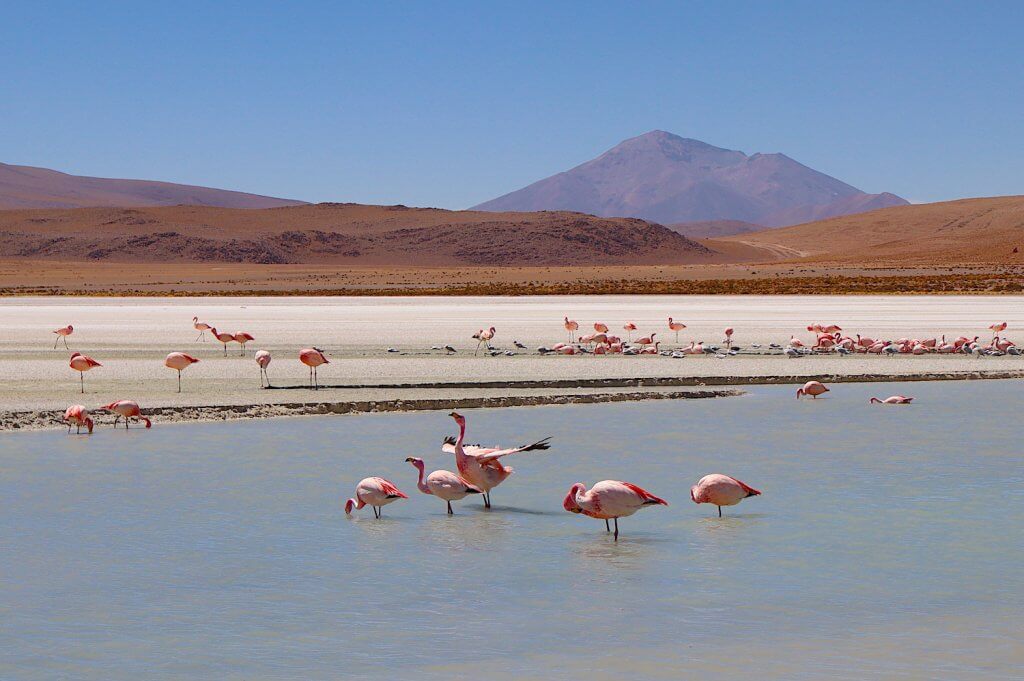Best Time to Visit Uyuni Salt Flats in Bolivia
Uyuni salt flats (Salar de Uyuni) is a year-round destination. The best time to visit depends on your priorities and what you want to see and do. Unlike the rest of the world Bolivia and Uyuni salt flats, have only two seasons: wet season (summer in Uyuni) and dry season (winter in Uyuni). Each season has unique things to offer with its pros and cons. Keep in mind that due to its altitude of 3,656 m (11,995 ft) above sea level (reaching 4000m at some parts), it’s always much colder at night in the salt desert than during the day. So regardless of the season, you’ll need to bring some warm clothes with you.
The wet season is usually the best time to see the mirror effect when a thin layer of water covers the surface of the salt flats reflecting everything above the surface, while the dry season is best for seeing crystalized hexagonal patterns on the salt desert and overall sightseeing in Bolivia and neighboring countries.
The salt flats are usually visited as part of a 3-day tour of the surrounding volcanic region which includes visits to hot springs, geysers, and colorful lagoons full of flamingos. The full list can be found in my blog post about things to do in Uyuni.
Dry Season (Uyuni Winter)
The dry season in Bolivian including the Uyuni salt flats usually lasts from May to October. During this time the weather is likely to be more stable with clear skies and sunny days. The main advantage of the dry season is that due to weather stability and accessible roads, you will have a high chance to see all the main attractions of Uyuni Salt Flats and its surroundings including visiting the Incahuasi island.
During the dry season, daytime temperatures are quite high in the Uyuni desert, but nights are very cold often falling below freezing temperature, sometimes as low as -20 C (-4°F). The coldest month is July with an average low of -3 C (26°F) and a high of 12 C (54°F).
I highly recommend taking warm clothes and sleeping bags for the night. Most accommodations around the salt desert in Bolivia have no heating. The best is to dress in layers and have comfortable shoes.
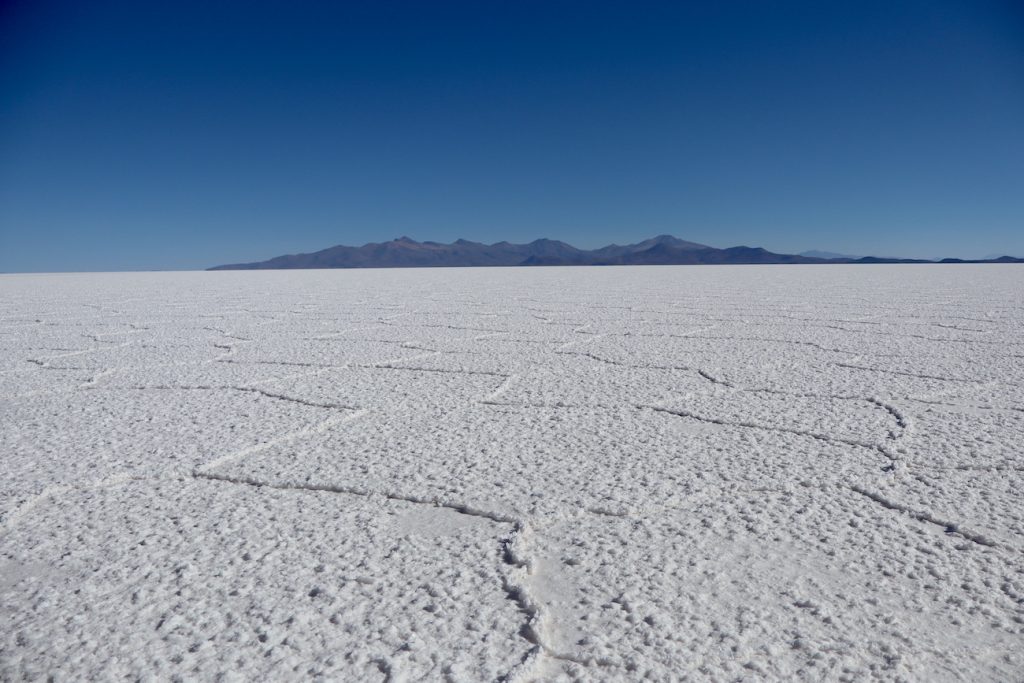
Pro Tip: Before going to Uyuni, buy some warm handmade Alpaca socks and headbands from local women selling them in most Bolivian local markets. They were a lifesaver for me during the cold nights in Uyuni. The cheapest place to buy warm alpaca clothes is the Witches Market in La Paz.
Wet Season (Uyuni Summer)
The wet season in Bolivian Salt Flats in Uyuni usually lasts from November to March give or take. The average temperatures are relatively higher compared to the dry season but the probability of rain as well. During the rainy season, the Salt Flats get flooded sometimes, making many places inaccessible and cars hard to navigate on impassable roads.
Average day temperature in the rainy season is usually above 19 C (66°F). The hottest month of the year in Uyuni salt flats is January, with an average high of 10 C (68°F) and low of 5 C (41°F).
Despite all the inconveniences of the rainy season, the biggest advantage it is that the wet season brings out the best Salar de Uyuni has to offer – the magical mirror effect!
After the rain, a thin layer of rainwater covering the salt transforms the flat into the ‘world’s largest mirror’.
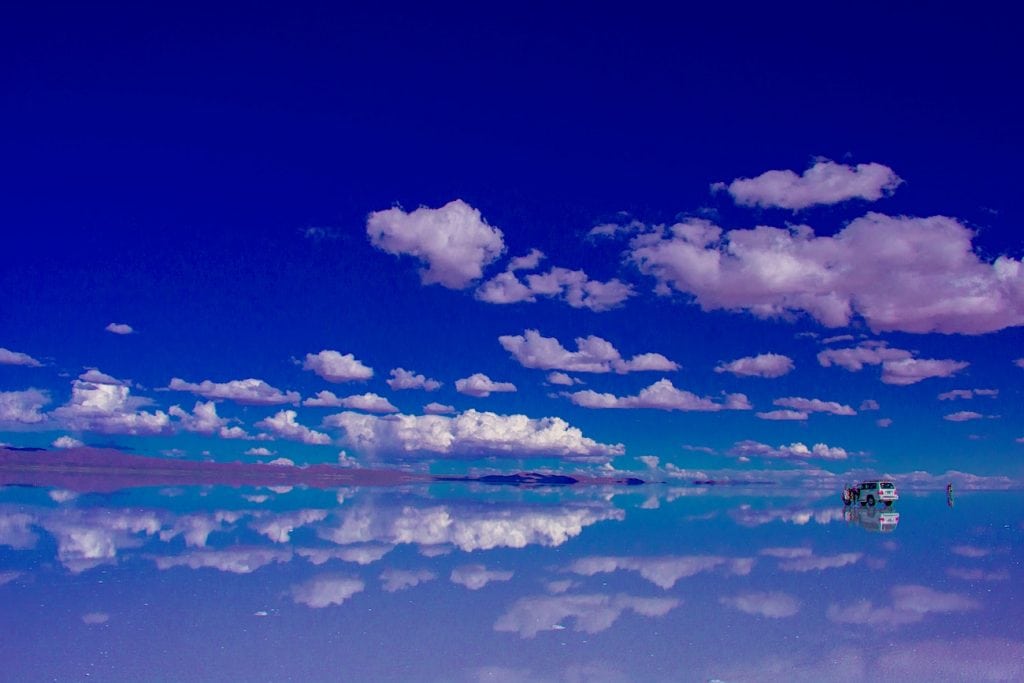
Best Time to See the Mirror Effect
You can see the mirror effect on the surface of the Uyuni salt plain when the skies are clear and the salt flat is covered by water. You only really need a few centimeters of water on the surface for the reflection to be visible. If there is too much water, then the roads become impassable and many attractions in Uyuni inaccessible. So the idea is that only some parts of the salt flats are covered with water and the rest are dry. Good tour guides usually know, which part of the salt plain has enough water for reflections and will take you directly there to take the best pictures.
The best time to see the mirror effect on the Uyuni salt flats while having the possibility to access other attractions of Uyuni is usually February and March. But it usually depends on the year and if it rained enough that year. Uyuni flats are located in a high-altitude desert in Bolivia and the area is generally very dry.
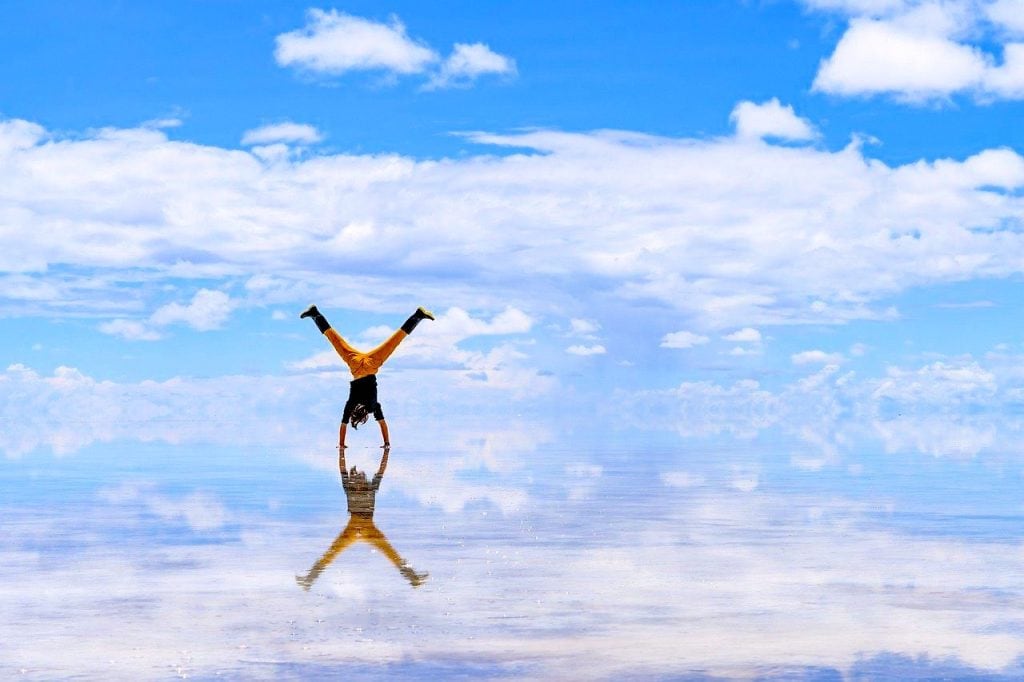
Best Time for Perspective Photography
The best weather conditions for perspective photography in the Bolivian salt flats in Uyuni are during the dry season (May/October). During this period rain is highly unlikely and salt flats remain dry. All the water from the wet season is already evaporated forming the distinctive crystallized hexagon patterns on the surface of the flats.
The tour guides in Uyuni usually have a lot of experience with perspective photography and usually take a few objects with them such as toy dinosaurs of various shapes and sizes. All you need is to have a nice group of friends to enjoy the process and have a lot of fun. Bring all your creative energy with you and don’t forget a good camera 🙂
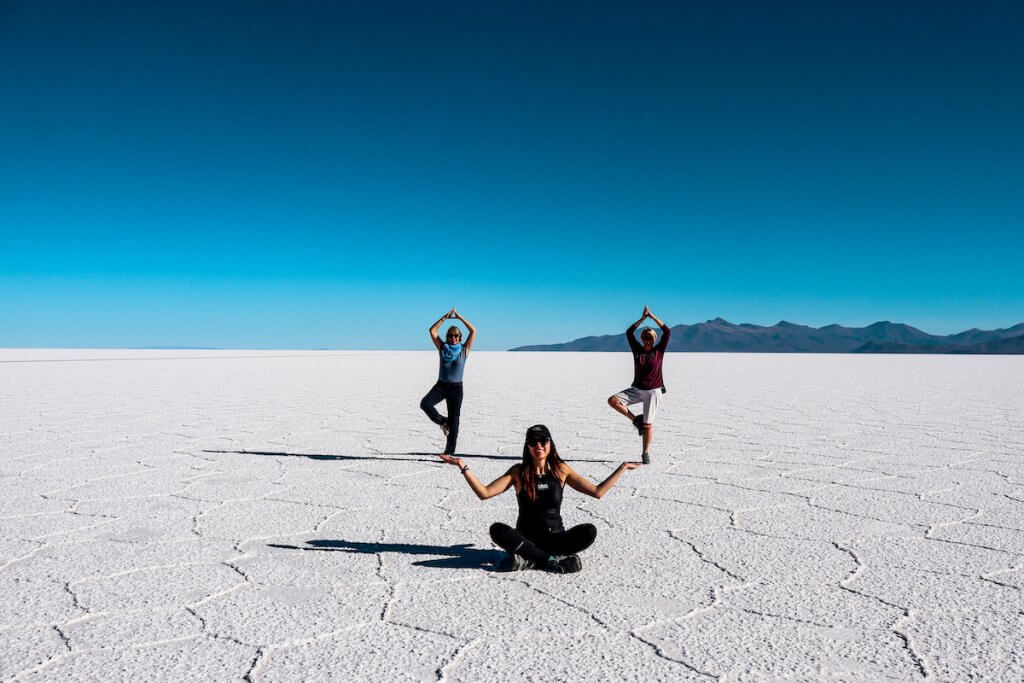
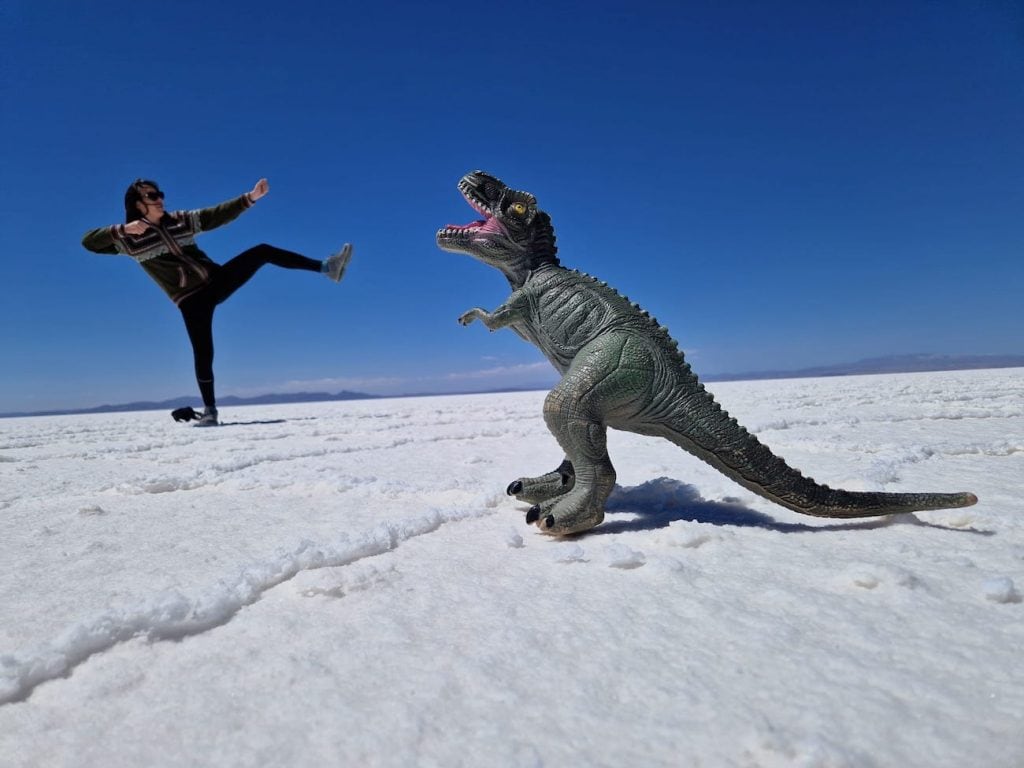
Best Time for Stargazing in Bolivian Salt Flats
Due to the lack of light pollution, wide horizon, and clear skies, Uyuni salt flats along with the neighboring Atacama Desert are the best place in the world for stargazing.
The white salty surface is highly reflective and when it floods during the rainy season it creates the mirror reflection of the night sky above. You can see the entire sky reflected at your feet. It’s like floating in an open space full of stars and feels surreal and magical.
You can observe the stars with the naked eye and don’t need any special equipment. The ideal time of the year for most people looking for a sky full of stars would be a new moon (also called the Dark Moon) and a clear sky with fewer clouds. If you are really lucky you can see shooting stars, as well as Saturn and Jupiter.
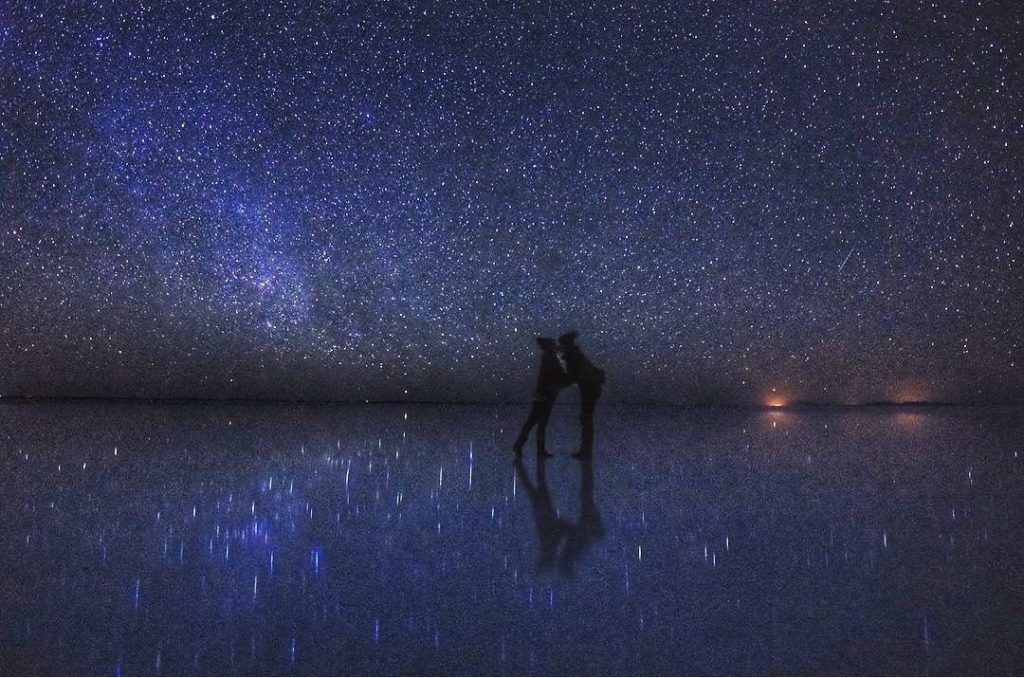
Unfortunately, the classic 3-day and 2-night group tours in Uyuni usually do not offer stargazing at night. So you will need to book either a full-day private tour or a short 5-hour Uyuni tour which offers stargazing.
Conclusion: When to Visit the Salt Flats in Bolivia?
The best month to visit Uyuni Salt Flats during the dry season is September/October. The average temperature is higher than in the coldest months in June/July while it is still dry and sunny. September and the dry season in general are the best time for perspective photography, plus all the main attractions in Uyuni and the rest of Bolivia will be accessible.
The best month to visit Uyuni Salt Flats for reflection photography and the “mirror effect” is in March/April during the wet season in Bolivia and Uyuni. At night temperature won’t drop to below freezing allowing you to venture out and stargaze in the thermal baths.
Generally, the best time to visit Uyuni salt flats in Bolivia is during the shoulder season which lies between the dry and wet seasons. This way you will be able to avoid the coldest temperatures at night and heaviest rainfalls with floodings. It is also low season, so tours and hotels will be much cheaper.
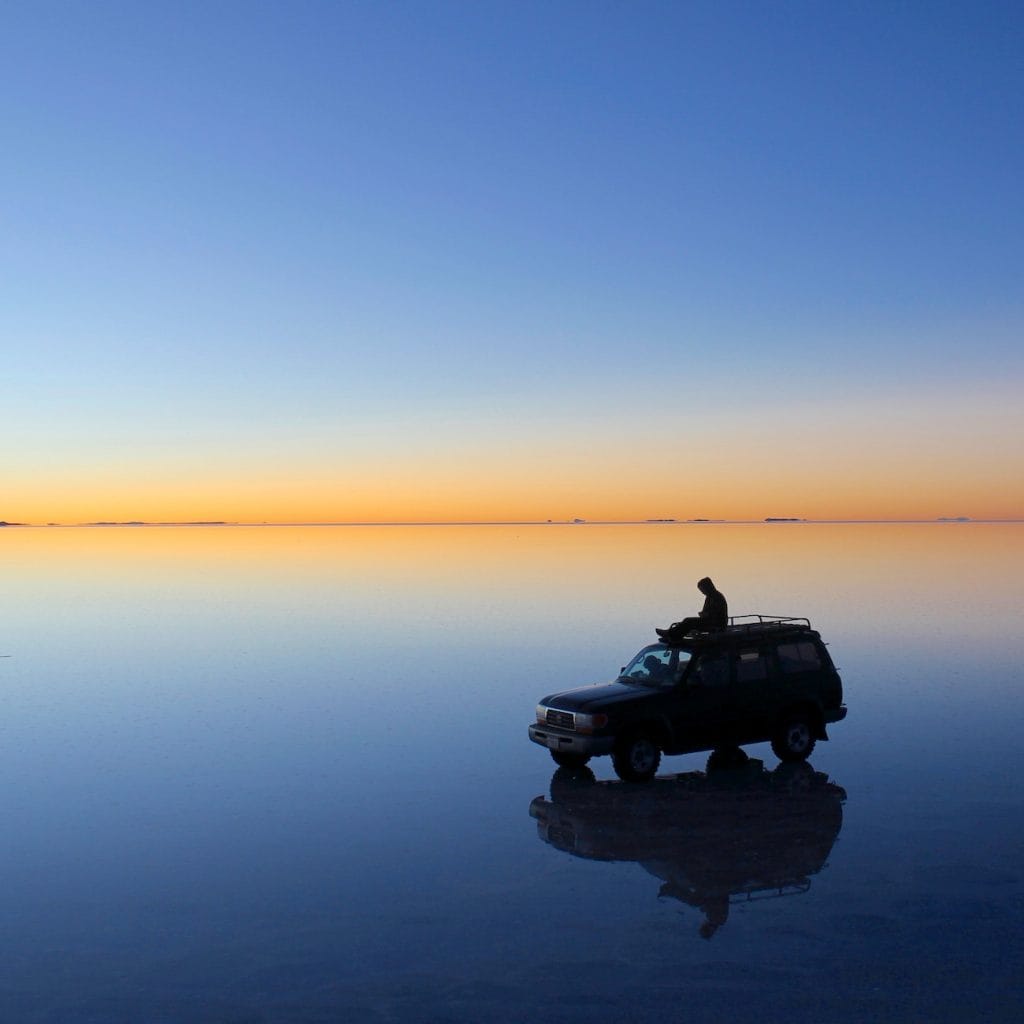
FAQ
How Many Days Do You Need in Uyuni Salt Flats?
To see the Uyuni Salt flats alone you need at least one day and one full night (for stargazing and sunrise). If you also want to see the surrounding geysers and colorful lagunas full of flamingos (which I highly recommend), then you need at least 3 days and 2 nights in the area. Most of the tours are between 1-3 days starting either from Uyuni town or San Pedro de Atacama on the Chilean side.
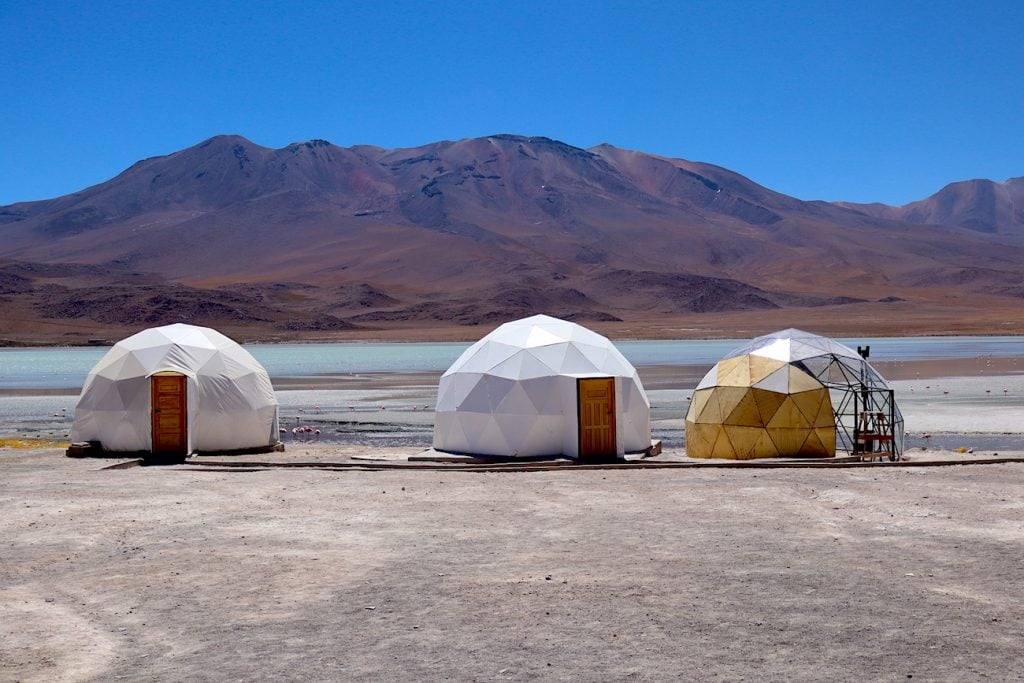
Are Salt Flats in Bolivia Worth it?
The Uyuni Salt Flats are one of the very few popular natural attractions in the world that exceed expectations and are absolutely worth visiting. Despite being one of the most famous attractions in Bolivia and South America, Salar de Uyuni is not overcrowded and still feels something special and unique. The nature in the area is still unspoiled due to its remoteness. No big hotels or restaurants are built here which is one of the primary reasons why I enjoyed it so much. But you need to hurry up if you want to see this unspoiled wonder of the world. There are rumors that natural oil and gas reserves have been found under the surface of the salt flat, so who knows how long can we still enjoy this untouched nature in its original form.
Disclosure: This article may contain affiliate links. If you purchase something through them, I may earn a small commission at no cost to you. It’s a win-win for both of us and helps to keep this content free.

